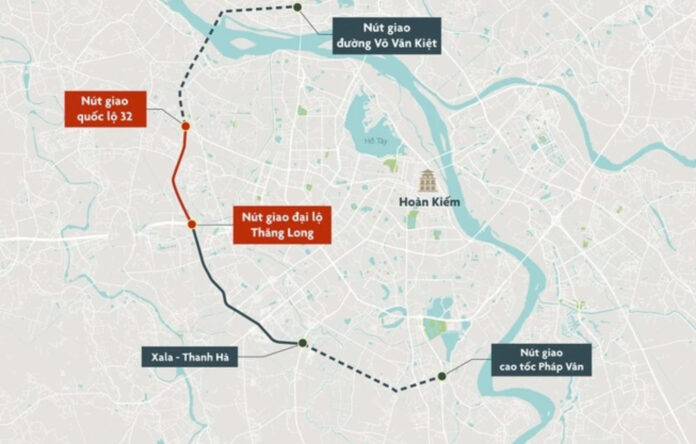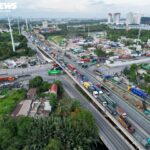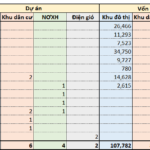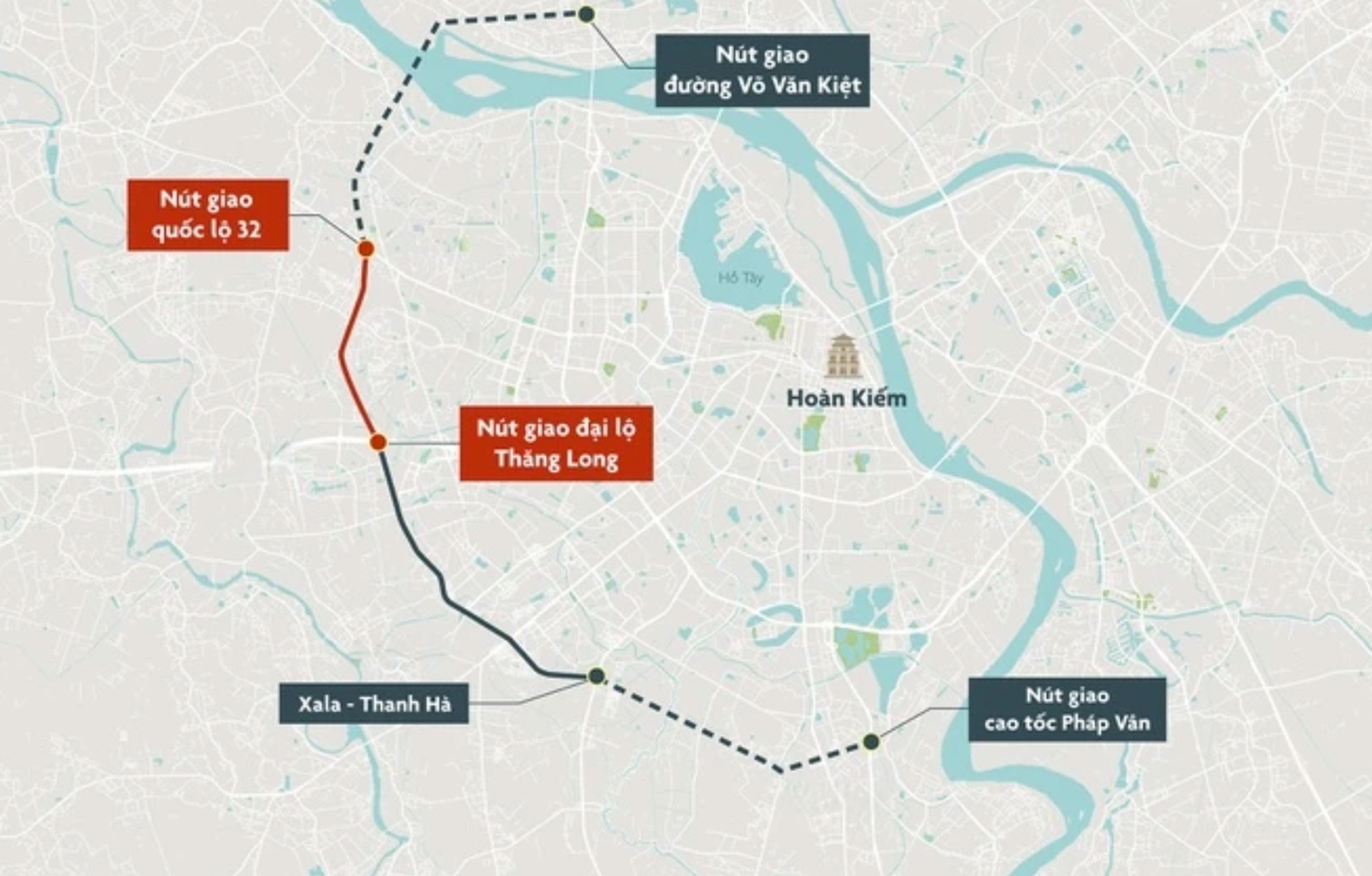
Ring Road 3.5 is a strategic transportation route, approximately 43 km long, starting from the Ngoc Hoi Bridge area, passing through the Phap Van Expressway interchange, the Xa La-Thanh Ha area, through Thang Long Boulevard, National Highway 32, and crossing the Red River at the Thuong Cat Bridge.

Recently, Ring Road 3.5 has seen a series of new developments. The most notable event is the upcoming construction of the Ngoc Hoi Bridge, which is expected to begin on August 19. The bridge, with an estimated investment of nearly VND 12,000 billion, will span the Red River, connecting Hanoi and Hung Yen provinces.

Surrounding the location of the future Ngoc Hoi Bridge are several large-scale urban areas that have been and are being developed, notably: Ecopark Urban Area, Vinhomes Ocean Park 2 and 3, and a major project by Sunshine Group.
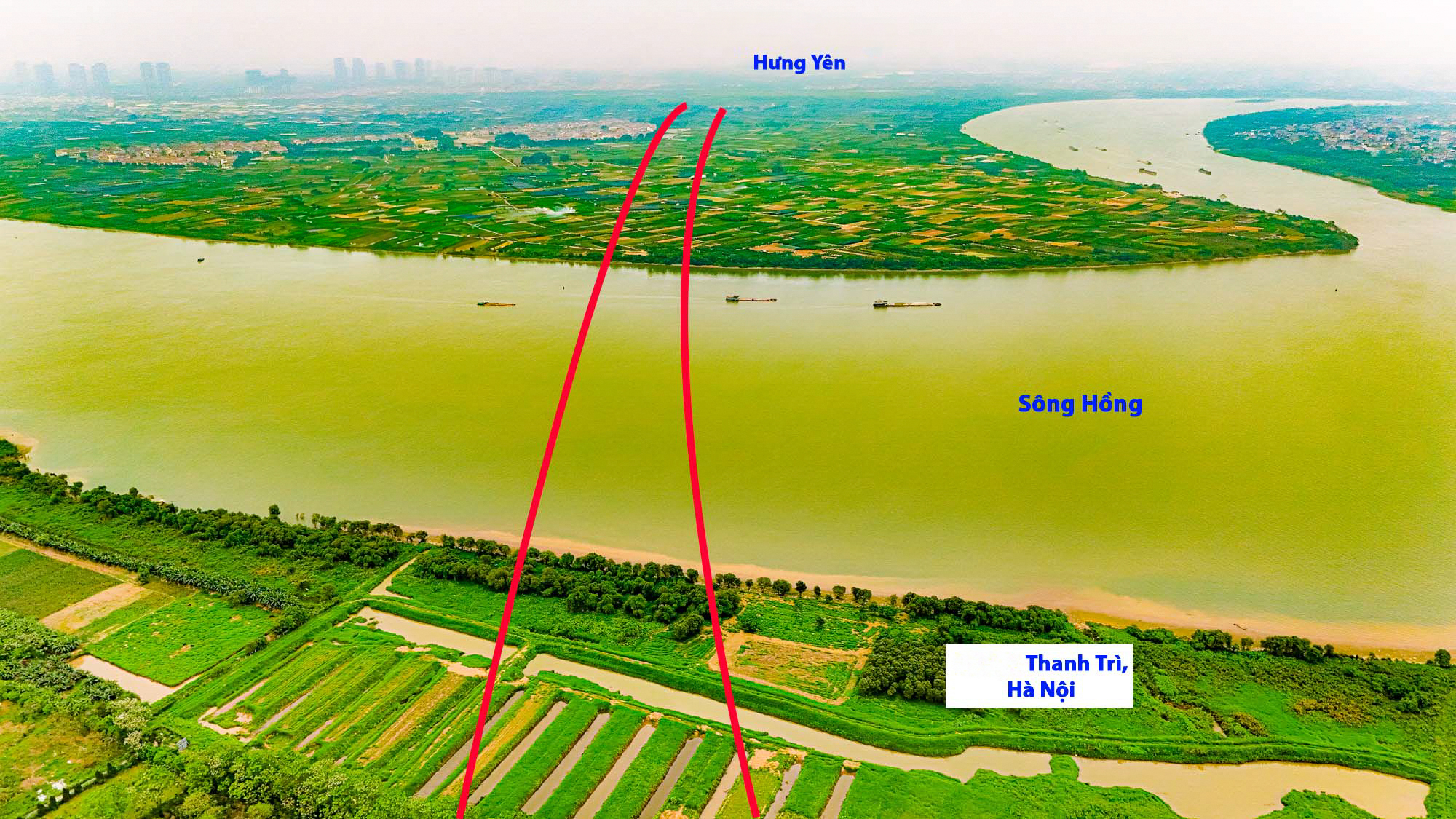
The main bridge spanning the Red River will be 680 meters long and 32.3 meters wide, including 6 lanes for motor vehicles and 2 mixed lanes. The approach bridges are 6.52 km long and 33 meters wide. The approach road on the Hung Yen side is 300 meters long and equally wide, with a synchronized technical infrastructure system.
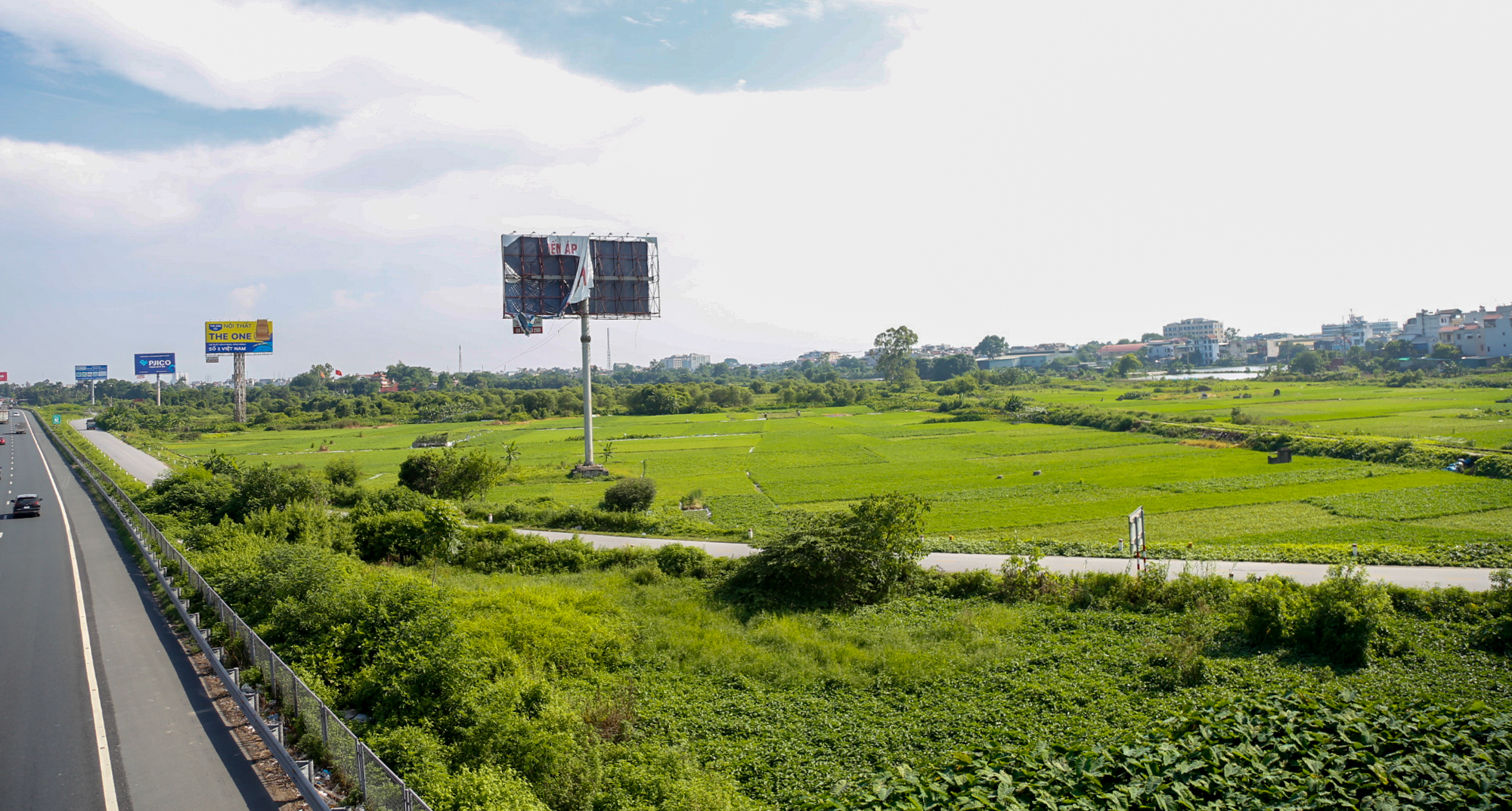
Upon completion, Ring Road 3.5 and the Ngoc Hoi Bridge will directly connect to Hung Yen, synchronizing with other radial roads. This will help divert traffic away from the city center, thereby reducing congestion on routes such as Ring Road 3, National Highway 1A (Giai Phong Street), and Road 70.
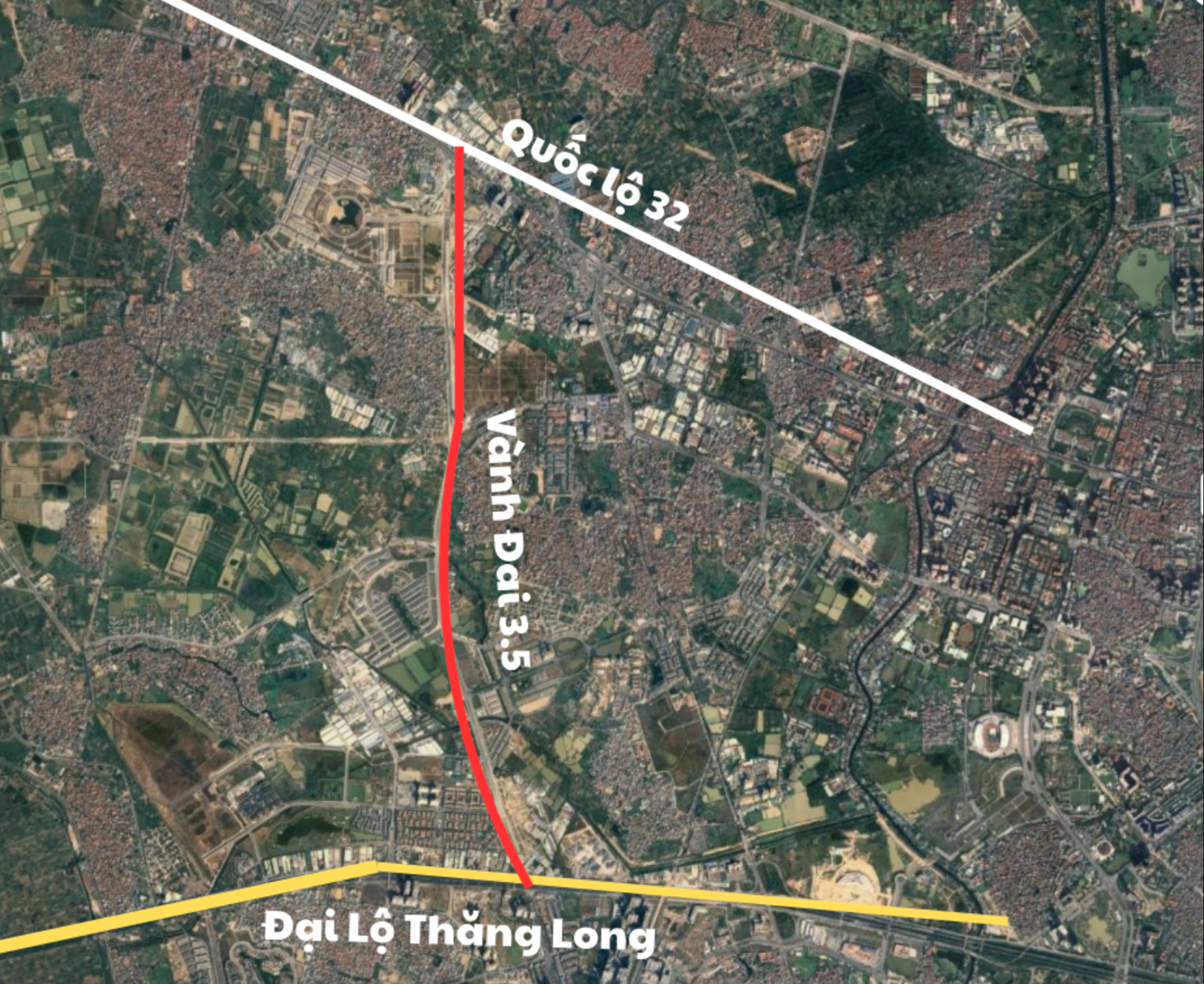
Following this, the Ring Road 3.5 project, from Thang Long Boulevard to National Highway 32, spans 5.5 km with a cross-section of 40 meters and includes 8 lanes. The total investment for this section is nearly VND 1,800 billion.
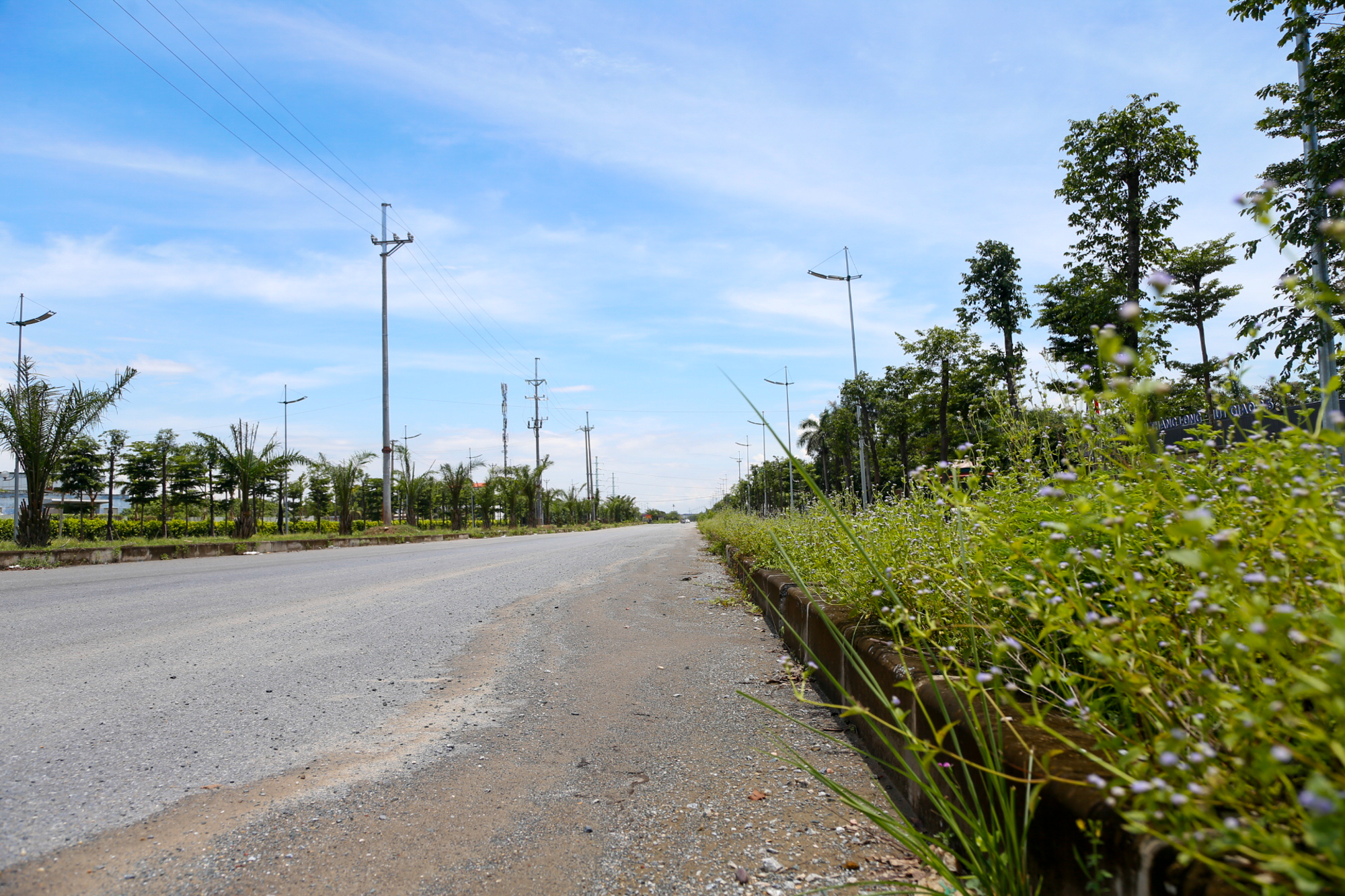
The main items of this road section, such as the lighting system, asphalt pavement, and greenery, have been basically completed.
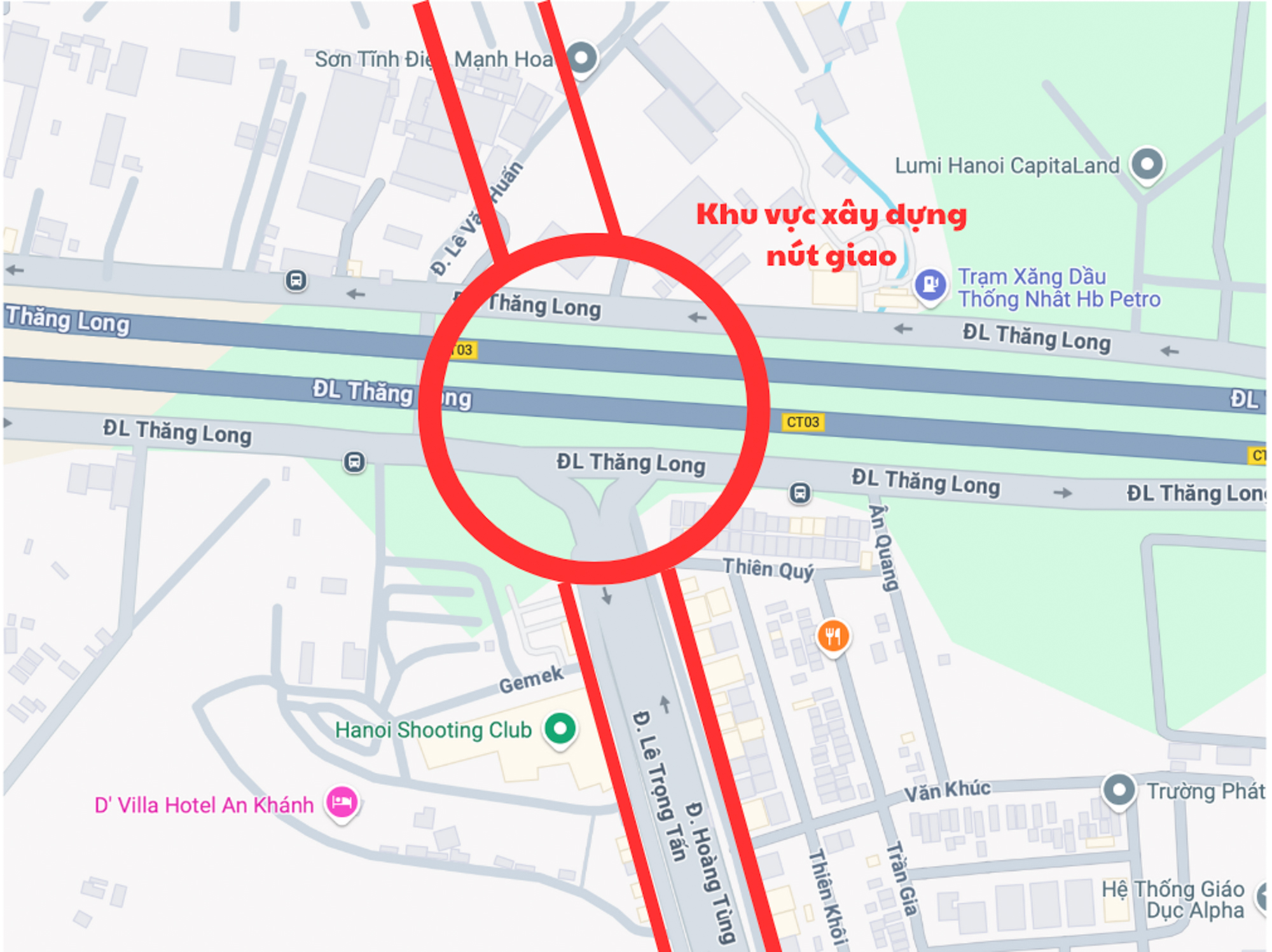
Ring Road 3.5 will feature two major interchanges. One of them, at Thang Long Boulevard, has an investment of up to VND 2,400 billion. This interchange is located near the Vinhomes Smart City mega-urban area.

In terms of construction scale, the interchange includes turbine branches combined with direct tunnels. The tunnel passes under Thang Long Boulevard in the direction of Le Trong Tan to National Highway 32, with its centerline coinciding with Le Trong Tan Street. Specifically, the tunnel is 975 meters long with 4 lanes. The turbine branch bridges (connecting ramps to the interchange) are 2,357 meters long with a width of 8.8 meters, accommodating 2 lanes.
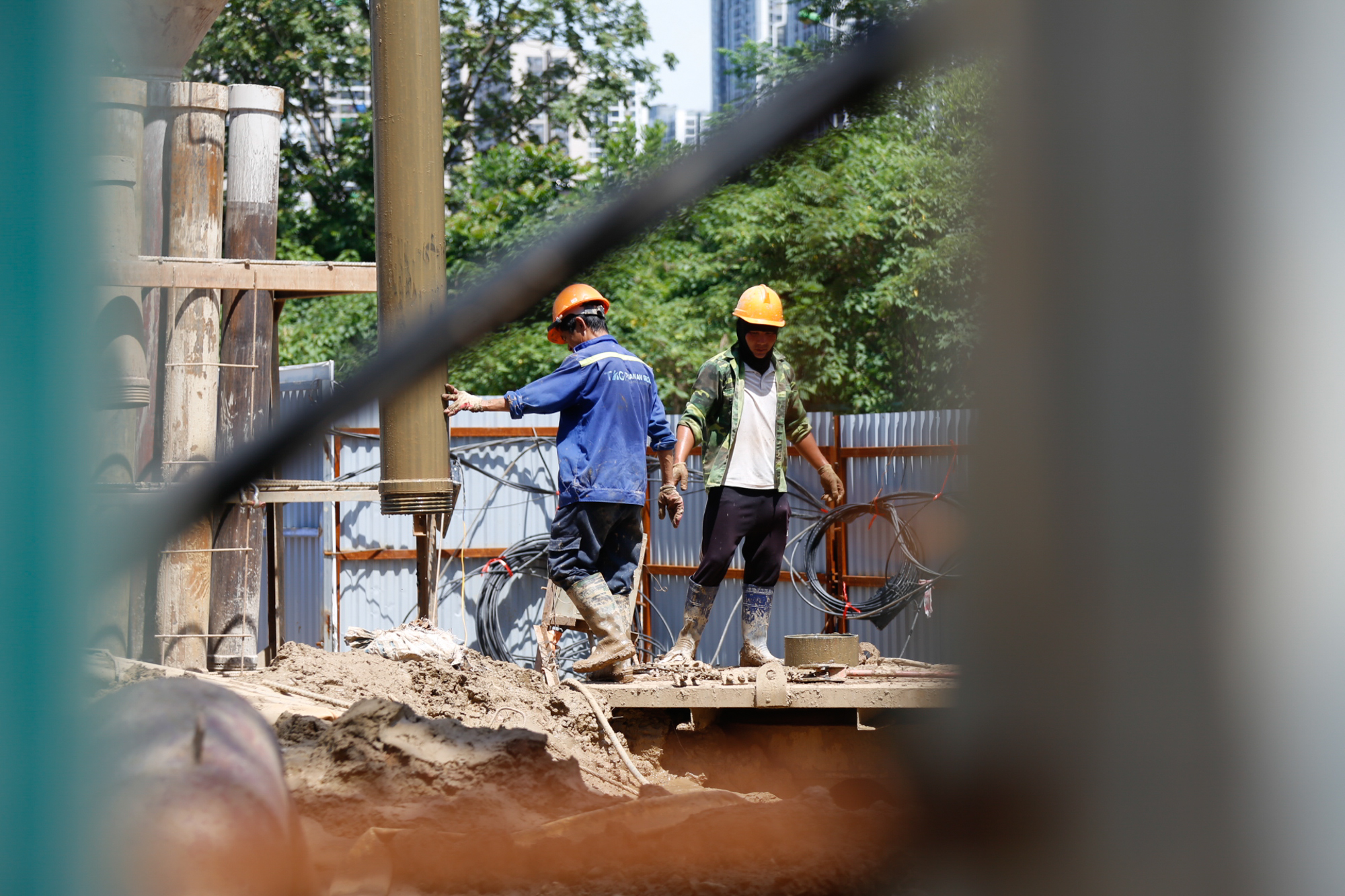
Currently, machinery and workers are being mobilized to ensure efficient construction of the project.
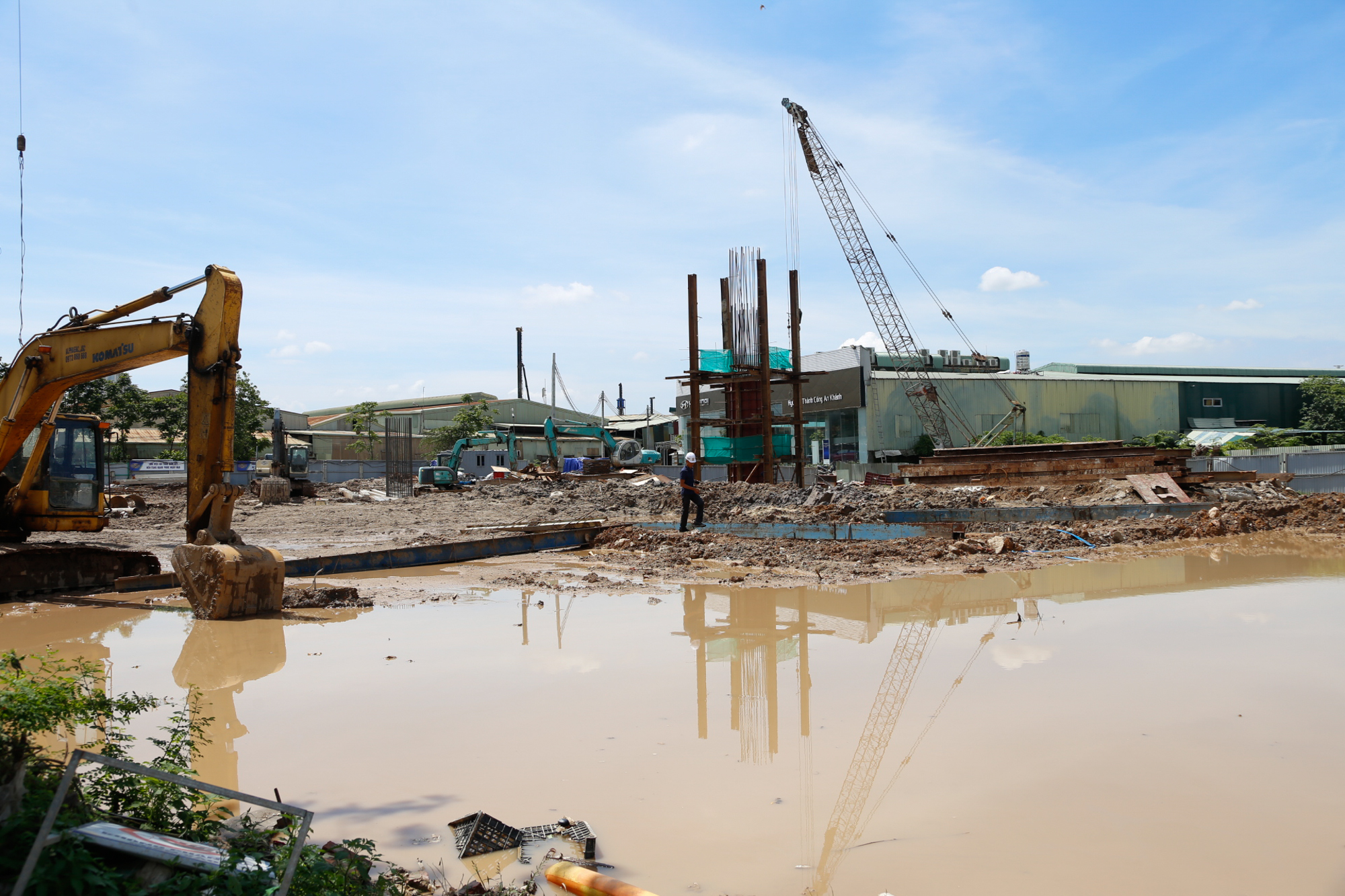
The project is expected to comprehensively address traffic congestion in the area. Additionally, it will provide a convenient transportation corridor to new urban areas such as Kim Chung – Di Trach, An Khanh, and Van Canh.
The Future of Intra-Provincial Travel: A Vision for a Seamless Airport Connection
“Unveiling a transformative strategy that forges connections between local destinations and urban areas, this approach is designed to create a seamless network that enhances accessibility and fosters growth.”
The Smooth Flow: Revamping Hanoi’s Pham Van Dong Street for Vehicular Ease
The recent installation of new traffic signs along Pham Van Dong road marks a significant step towards easing traffic congestion. Previously, despite having six lanes, vehicles were restricted to just two lanes, resulting in a tedious and frustrating commute for drivers. However, the Hanoi Department of Construction has addressed this issue by implementing a new system where all lanes are now accessible to cars, while motorbikes are directed to use the four innermost lanes. This strategic reorganization aims to improve traffic flow and enhance the overall driving experience for all road users.
Investment Opportunities 21-27/06/2025: 24 Urban Areas Seek Investment of Nearly 107.8 Trillion VND
Week of June 21-27, 2025: A total of 14 provinces and cities sought investment for 36 projects, amounting to nearly VND 127 trillion. Among these, urban areas dominated with 24 projects and an investment of nearly VND 107.8 trillion, with the largest concentration in Ha Nam province.

